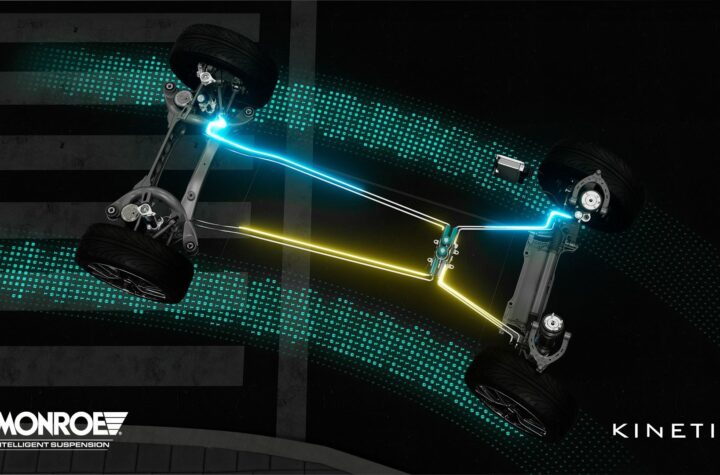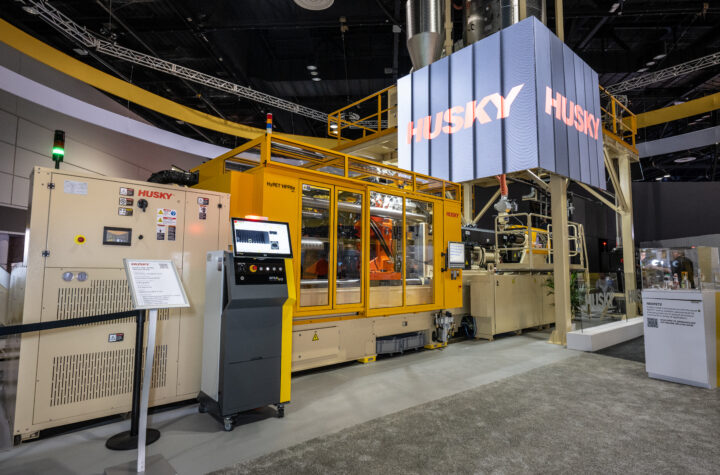Advances in bonding, damping, sealing and reinforcing solutions are helping to make vehicles safer, stronger, lighter, quieter and greener.
That technology is now being applied to the new generation of manufacturing systems, such as additive manufacturing (aka3D printing) by companies like specialty chemicals company Sika.
Automotive Industries (AI) asked Thomas Gasparri, Sika Head of Applied Engineering for Europe, what contribution the company is making to the commercialization of 3D printing in automotive manufacturing.
Gasparri: Sika offers innovative additive manufacturing (AM) solutions to OEMs and component suppliers using our range of proprietary adhesives and heat-reactive materials. We supply 3D printed solutions where it makes economic sense, especially during the design and development phase. Additionally, we design parts specifically for AM, which allows us to increase the manufacturing speed and benefit from the design freedom offered by the technology. It enables new concepts where one part fulfils functions previously covered by multiple parts.
AI: For what applications is it best suited at present?

Gasparri: Jigs and fixtures, functional prototypes (one-offs and small volumes), visual models, mock-ups for laboratory validation, short-run production of fully functional parts (low volume and derivatives), and spare parts where service contracts need to be honored after vehicle production volumes end. An additional advantage comes from the ability to make interim volume tooling based on mathematical models reversed from the part. This is a sweet spot where the cost of full steel Injection molding tools is not justified between the protype/design phase and high production volumes.
AI: When will it become viable for serial manufacturing?
Gasparri: As a technology it is viable today in select industries but is typically predicated on production volume requirements or the intricacy and performance requirements of a part design. A key factor restricting the adoption of 3D printing is the high cost associated with 3D printing materials (such as heat-resistant materials for automotive applications).
In addition, the production still requires a lot of skilled manual intervention (such as slicing and post-processing). “Slicing” is the process of converting a 3D model into a set of instructions for the 3D printers. “Post processing” refers to processes such as sanding or polishing that need to be performed on a printed part.
There is also some difficulty in achieving the consistent and repeatable quality standards that are needed to mass-produce identical products (part-to-part variation).
However, reducing raw material costs and improved automated processes (from slicing to post-processing) continue to improve AM viability for serial manufacturing,
AI: What Sika products are used in packaging? What are the innovative and sustainable packaging solutions offered for the Sika products?
Gasparri: Our SikaBaffle® products are 3D, heat-reactive thermoplastic parts designed to seal a body cavity. SikaBaffle® products are mainly injection molded parts. Sika has developed smart
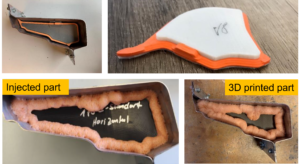
features to increase our packaging efficiency and reduce transport-related CO2 emissions. Where geometries lend themselves, parts can be stacked or nested within each other for not only increased volume in containers but using the reverse math model for robots in automated assembly through pick and place in the build process through pre-determined motion paths.
AI: What are the advantages in terms of space and efficiencies in the manufacturing process?
Gasparri: They include markedly improved sustainability (reduced transport-related CO2 emissions), as we can increase the number of parts inside the packaging, reduced need for storage space through maximized volume and automated assembly processes using pick and place.
AI: What are some of the advances being made in manufacturing processes?
Gasparri: Here are some examples of how Sika is supporting the automation of vehicle assembly processes:
AutoPad II – Automation efficiency in high-per
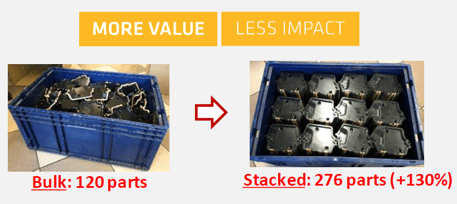
formance damping solutions
SikaDamp® solutions comprise a broad family of sound deadeners based on the elastomer modified bitumen or butyl which can also be coupled with a constraining layer. Magnetic SikaDamp® parts can be automatically applied (up to 45 pads / minute) for a targeted noise damping function which can enable weight reduction (using the right material in the right place). They can be applied on vertical and overhead surfaces (i.e. roof) with ease. Using standard geometries reduces engineering cost, part numbers and logistic costs.
SikaDamp Self adhering Damping products applied with robot
Other types of SikaDamp® parts (self-adhesive & peel-and-stick products) can also be automatically applied, thanks to a patented EOAT (end of arm tooling).
These parts are usually applied manually (with a roller). Improper application may generate air pockets between the adhesive and the substrate which may result in adhesive failure and lower damping performance.
Our EOAT eliminates trapped air bubbles during the bonding process, makes automation possible and guarantees stable performance level by applying consistently the correct pressure to the mating surfaces.
Automatic assembly of SikaBaffle parts (injection molded parts)
Our SikaBaffle® products are 3D, heat-reactive thermoplastic parts designed to seal a body cavity. SikaBaffle® products are mainly injection molded parts. Sika has developed smart features to enable auto
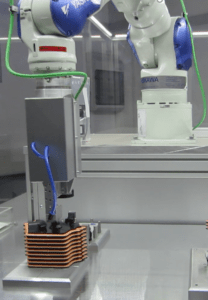
mation at the OEM facility. These features allow the use of only one standard gripper. This concept is re-usable throughout the same plant, and also across all plants.
- Provision of digital data for product handling from the receiving container
- Automation of processes for placement in the BIW per geometries and available programmable math data
All the proposed automatic applications (above) can be considered as Industry 4.0 compatible if properly integrated in the customer process. They are available today.
While our products are not digital themselves, all the data supplied with them (for example on the labels) can be used for programing automated processes. We recognize and leverage our long history of value creation through automation efficiency long used in our bulk products and continue to push the digital transformation to our “parts” technologies, contributing to delivering performance beyond the expected.
Sika estimates that its solutions can deliver:
- 40% weight reduction in the car body
- Saving of 80 million liters of fuel a year globally through lightweighting
- 10 billion fewer welds needed using Sika structural adhesives
- Reduction of 50 000 tons of steel a year through the use of SikaReinforcer

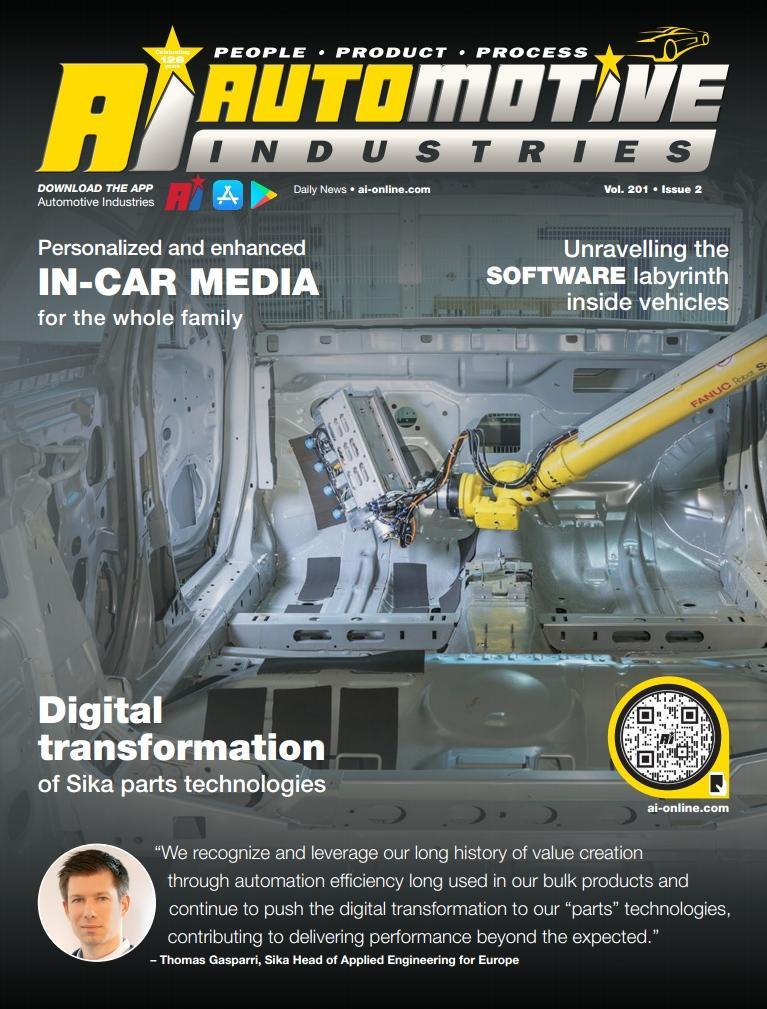
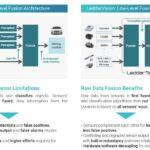 LeddarTech - high-performance cost-effective sensor fusion and perception solution accelerates ADAS and AD adoption
LeddarTech - high-performance cost-effective sensor fusion and perception solution accelerates ADAS and AD adoption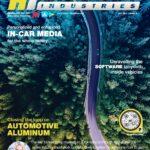 Novelis – End-of-life: A new beginning
Novelis – End-of-life: A new beginning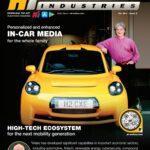 Wales harmonizes support for power device and sensor technology
Wales harmonizes support for power device and sensor technology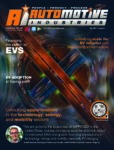 IMPROVED - Tailoring deals to accelerate the transition to electric vehicles
IMPROVED - Tailoring deals to accelerate the transition to electric vehicles LUXIT - Lighting as the main driving force behind vehicle design
LUXIT - Lighting as the main driving force behind vehicle design
